Robot vacuum buying guide: Which is right for you?
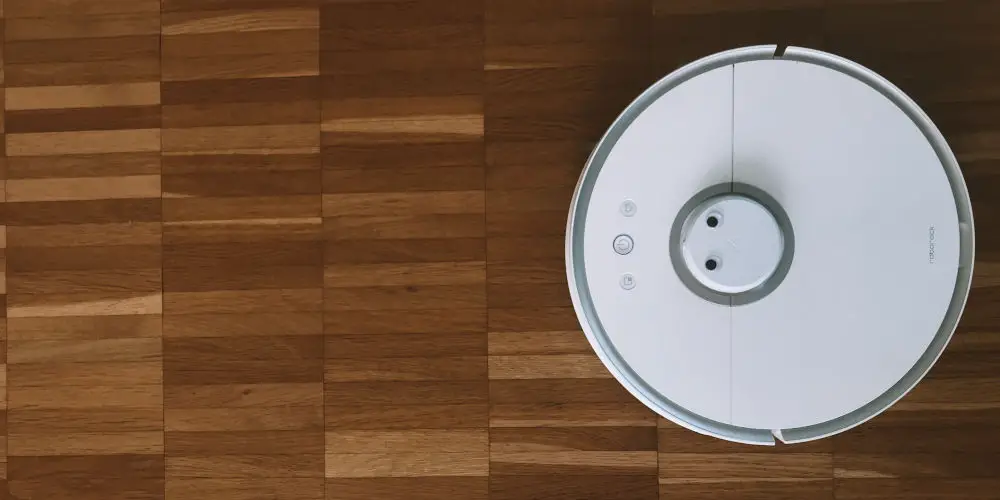
Have you ever met someone that truly enjoyed vacuuming their home? While these stranger people exist (sorry!), most see it as a needs to an end. You might want to upgrade to a robotic vacuum but don’t know where to start. If that’s the case, this robot vacuum buying guide is for you.
In the garden, robomowers have revolutionised lawn care as they remove 99% of the effort involved in having a green lawn. Robot vacuum cleaners or robovacs for short, do the same indoors.
You’ll still need to do some vacuuming. Sorry. But, your smart home device will take care of the big picture, leaving you with the odd corner and the stairs to do.
If you’re looking to buy your first robot vacuum cleaner, you might be overwhelmed by the sheer amount of options. That’s the reason behind writing this robot vacuum buying guide. By the end, you’ll have a much clearer idea of what you want and how far your budget stretches.
Quick tips for buying a robot vacuum
- Know your home: Do you have mostly hard floors or carpet? If you have carpet, how thick is it?
- Pets: Will the robot vacuum have to pick up kitty litter or thick fur?
- Budget: You can easily spend £2,000. And while some models are under £300, you’ll have to compromise on features, such as Wi-Fi connectivity or the self-emptying dustbin.
- App: Some robot vacuums offer control by dedicated apps. These apps help you monitor your device, schedule cleaning, and map your home.
- Navigation: A cheap robot vacuum will likely move sporadically and bounce off walls and obstructions. Medium and high-end models are guided by lasers and optical sensors.
- Quality of cleaning: Some models collect dust and debris more effectively than pet hair, while others might work better on hard floors rather than on carpet.
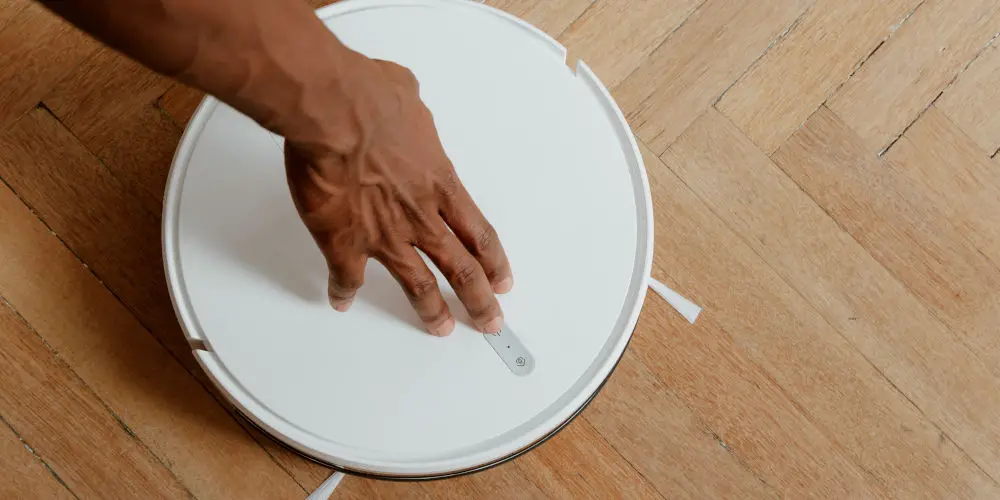
How do robot vacuums work?
Robot vacuum cleaners are built to perform automatic house cleaning. You can activate them manually, remotely (if they have an app), or pre-programme the unit. You can set them up to perform their tasks while you’re out.
Most models come with a charging dock. So, you don’t have to worry about charging them. The more expensive models have docking stations that are capable of self-cleaning, emptying the dust container from time to time, and can communicate over Wi-Fi.
The ideal robovac for you will depend on the flooring types in your home, the number of stories, potential obstacles, and the amount of general mess they’ll have to deal with.
How long do robot vacuums last?
It depends on several factors, including flooring types, maintenance, and how often you use the device. If you have really thick carpets and run your robovac daily, it won’t last as long as someone with wood floors, who runs their device once a week.
If you have pets, you could find that your robot vacuum cleaner doesn’t last as long as it has to work harder to keep your home clean.
Unlike ordinary vacuum cleaners, which are subject to more abuse over their lifetimes, robot vacuums are modular and flexible. You can easily change the charging the base, for example.
However, if a sensor is damaged, you may have to replace the entire device. Thankfully, most companies offer a twelve-month warranty or greater, which typically includes parts and labour.
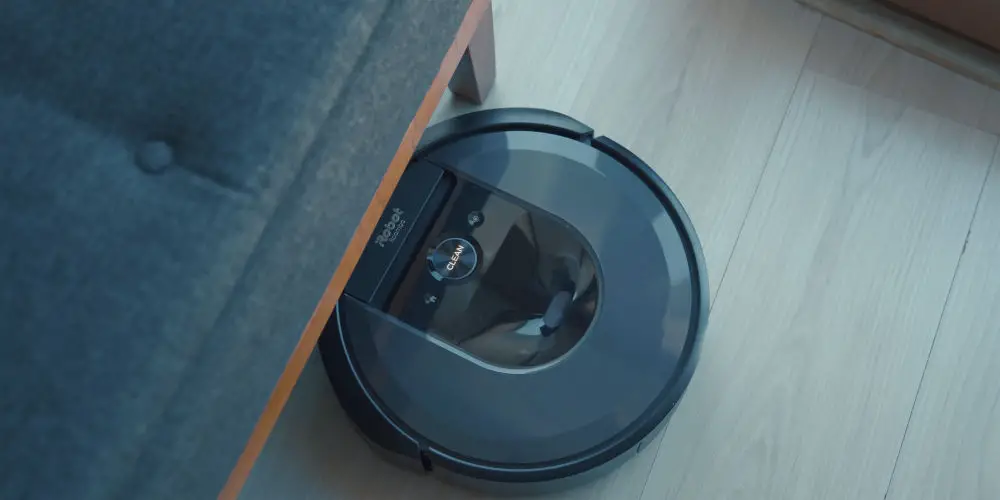
What to look for
While it might seem that there is an endless list of features to pick from, it’s worth understanding the basics. Hence why you’re reading a robot vacuum cleaner buying guide!
Here are the main features to consider when buying a robot vacuum cleaner. It’s worth scoring each on whether you require that feature or not.
#1 Battery life vs charging
While this might seem an unusual starting place, it’s a valid one. As battery-powered devices, robot vacuum cleaners can move around a large space on a single charge. But clearly, they will need to be recharged at some point.
The real issue is the charge time. Your unit might run for an hour or 90 minutes on one charge, which is enough for your downstairs. But then it requires 3 hours to charge before you can move it upstairs, creating a big problem.
Ideally, look at both charge time and use time. Doing so will allow you to complete the majority of your home on a single charge. When you do need to recharge, you’re not waiting for hours.
With some battery-powered DIY tools, we’ve seen an operational time of 20 mins after a 3-hour charge. While this might be fine if you’re drilling a few holes, it isn’t ideal for vacuuming your home.
#2 Suction
When it comes to suction power, some brands present it as Watts and others in Pascal (Pa). The two units are not directly comparable, making the situation a little tricky. However, most units offer between 2,000 and 3,500 Pa of suction power.
Robot vacuum cleaners typically offer different suction levels. Each is designed to tackle a different material. Usually, the unit will automatically change the suction level depending on the material it encounters.
You might find that the more suction a particular robovac offers, the higher the price. It’s also worth considering that the more suction, the louder the robot vacuum cleaner.
#3 Bin size
As with the battery size, how much the bin can hold is important. You don’t want to spend your life worrying if the bin is full meaning robovac isn’t cleaning and waiting for you to empty it.
The typical bin is 0.5 litre in capacity. But they range from 0.3 L to 2L, allowing you to select a robovac with enough capacity to clean your home.
#4 Mapping
Some robovacs have a bad reputation for being quite clumsy when navigating a space. And while many entry models use sensors to feel out the room and potential obstacles, more expensive devices use mapping.
If you’re new to mapping, it is exactly what you think. As the robotic vacuum enters a room, it will scan the space and plan the best route to clean it. Also, it’ll identify potential obstacles and work them into the plan to ensure they are avoided.
By mapping a room, the robovac can ensure it’s operating at maximum efficiency both now and next time. After creating a room map, it will save it, allowing the unit later to recall it.
Some models use LiDAR sensors built into the device to perform Simultaneous Localization and Mapping (or SLAM). SLAM also keeps track of the device’s location within the mapped area. So, your robot knows where it has to go.
With some models, you can purchase extra charging bases, allowing your unit to map multiple floors and recall them at will, speeding up the process.
#5 Overcomes obstacles
Whether or not your robot vacuum uses mapping technology, it will have built-in sensors. These help the unit recognise if objects appear in front of them.
Robovacs are programmed to avoid tables, chair feet, and toys as standard. More advanced models will understand if socks, cables, bugs, and other objects are in front of them; and be able to avoid hitting them.
These sensors also feel when a potential drop is in front of it, such as a step. When it senses a change in height, it will move away from the edge to a safe distance.
No robotic vacuum cleaners can go up or down stairs, but they can navigate around obstacles and handle small differences in flooring materials, such as moving between tiles and carpet.
#6 Controls
All smart vacuum cleaners will have controls on the unit. Some even come with a remote. All pretty basic so far. But they require you to be there to operate them.
More and more units have built-in Wi-Fi, allowing them to work with a smartphone app from anywhere. There are usually apps for both Apple’s iOS and Google’s Android operating systems, allowing you to operate your unit using your existing phone.
Some robovacs allow you to operate them with voice commands using a smart assistant like Google Assistant, Alexa, and Siri. You can even use IFTTT to control some units remotely.
#7 Mopping
Some robotic vacuum cleaners can also handle mopping floors. While this feature may not be important for everyone, for some, it’s a feature to consider when buying a robot vacuum cleaner.
#8 Noise level
You might intend to be out when your robovac is working, but you should still be aware of the noise level. If you can’t test units in real life before buying, you should research how loud it is on the highest power setting.
It’s also worth comparing a few units on paper and, if possible, in real life to understand how noisy devices will be. You might not fully understand decibels (dB) ratings, but after comparing a few different options, you’ll have a better idea.
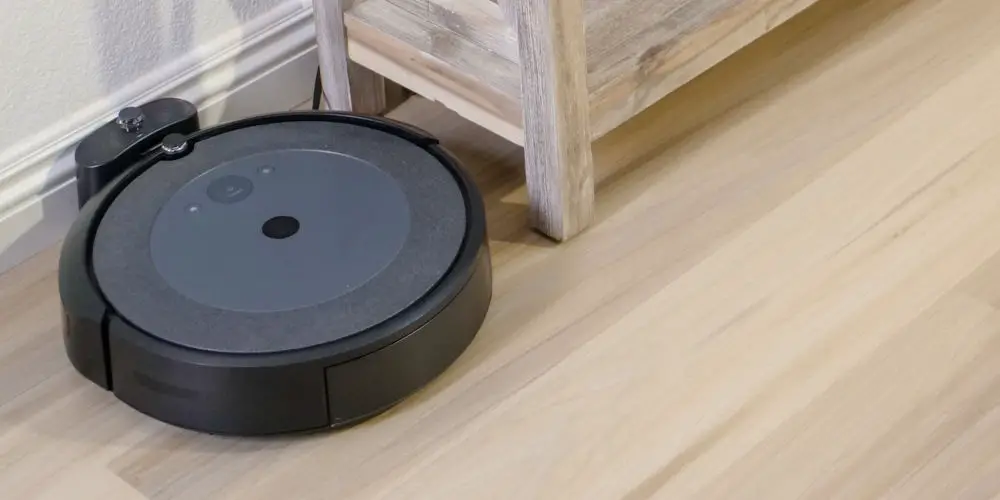
Are they difficult to maintain?
To remain effective robotic vacuum cleaners need regular maintenance. if your robotic vacuum is clogged with debris, it won’t properly clean your home. So, you need to clean its bristles and brushes frequently if you want it to keep cleaning well.
Thankfully, the good news is that cleaning a robotic vacuum isn’t complex. It takes only a few minutes, and there are usually instructions in the manual.
How much do they cost?
The models in our best robot vacuums article range from under £100 to over £2,800. So, you can find a unit to match your budget. However, the more expensive the device, the more sophisticated the features.
Who builds the best robot vacuum?
There are loads of great robot vacuum brands available. So no matter your budget or requirements, you can find a few that fit the bill. However, it’s worth researching the brand and reading some reviews before buying. Here are some of the biggest brands:
iRobot
iRobot makes some of the best robot vacuums on the market. They have models at all price points, from budget to premium, so they’re likely to have one that’s ideal for you.
Neato
Neato is another popular brand with a reputation for making solid, hard-working bots. The latest Neato models are D-shaped vacuums with incredible cleaning power and superbly-long battery lives.
Eufy
Eufy offers budget-friendly options with fewer fancy features but strong suction power. The latest Eufy model works with an app and is one of the slimmest on the market, allowing it to move into hard-to-reach areas.
iLife
Another affordable brand, iLife, makes powerful vacuums with a good range of features such as voice control and room mapping. It also offers several different cleaning modes and dirt sensors.
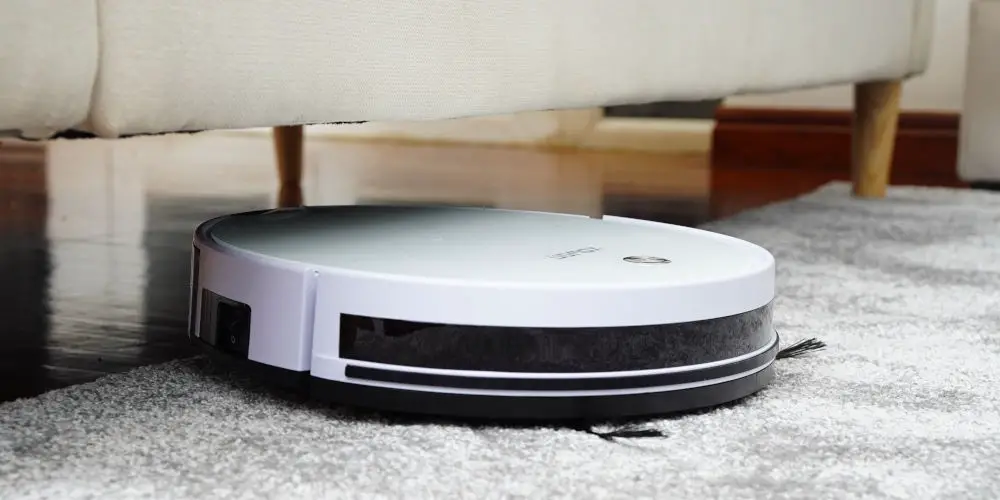
Using this robot vacuum buying guide to select a unit
Buying a robot vacuum for your home is worth it. And hopefully, you now have a better idea of what to look for when buying one after reading our robot vacuum buying guide.
Considering that robotic vacuum cleaners range from £100 to over £2,000, it’s worth remembering that the price is linked to the features it offers. You won’t get a top of the range device for £200. So, you should choose carefully.
And while not all models offer the same level of cleanliness and efficiency, it is possible to maintain these devices for a long time and have them run on auto-pilot, with only minimal human interaction.
A robovac will save you time and effort but won’t clean your entire home. They can’t vacuum stairs, for example. So, it’s worth purchasing an upright vacuum cleaner to help you remove dust from corners, skirting boards, ceilings, and other places the robot cleaner cannot reach.




